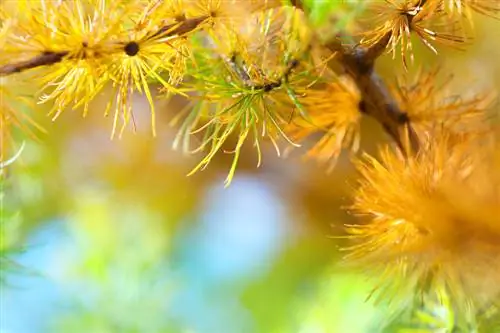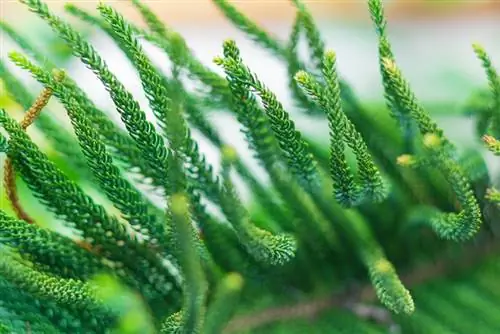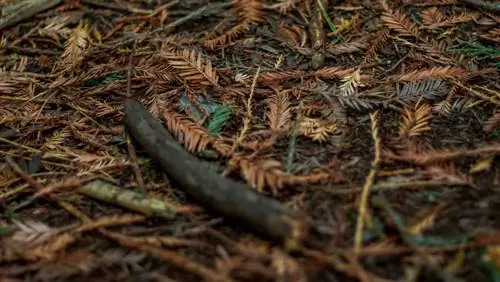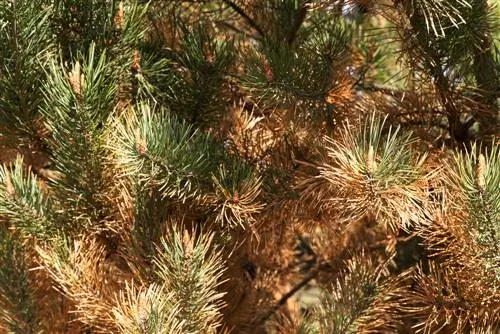- Author admin [email protected].
- Public 2023-12-16 16:46.
- Last modified 2025-01-23 11:21.
It is precisely because the pine is an evergreen plant that the conifer is so popular in your own garden. Even if the tree is extremely robust, it does not always forgive one or two care errors. Of course, the pine tree is not entirely free from pests or diseases. These causes often result in discoloration of the needles. It is important to first identify the exact trigger of the symptoms before acting hastily. The following guide will help you.

Why is my pine tree getting brown needles?
If a pine tree gets brown needles, this can be caused by natural vintage change, change of location, unsuitable soil, frost-drying, lime chlorosis, pine shoots and shoot dieback as well as a pine moth infestation. Depending on the cause, appropriate countermeasures such as irrigation, soil adaptation or pest control are required.
Reasons for needle discoloration of the jaw
If your pine tree gets brown needles, the following possible causes are:
- a natural process
- a disease infestation
- a care mistake
Detecting and combating diseases
The most common triggers from the areas mentioned above are discussed below:
- the natural vintage change
- a change of location
- unsuitable soil
- Frost-drying
- Calcium chlorosis
- Pine shoots and shoot dieback
- the pine moth
The natural vintage change
The pine tree is evergreen, but it doesn't keep its needles forever. It loses its old leaves almost noticeably every year. Every two to ten years, however, this process takes place on a particularly large scale, causing the needles to turn brown. However, in this case there is no need to worry as it is a completely natural process.
A change of location
Pine trees form an extensive and deep root system that is injured when moving. From the age of five, conifers have difficulty recovering from a change of location. The separated roots can no longer adequately supply the needles and they turn brown. Generous watering helps here.
An unsuitable soil
If the deep taproot hits crusty soil, there is a risk of root rot due to waterlogging as well as a lack of supply. Therefore, work a layer of compost or mulch into the soil before planting your pine tree.
Frost-drying
Icy winters are hard on the pine tree because it cannot compensate for its loss of moisture by absorbing water from the ground. When there is frost, you have to provide it with the water it needs.
Calcium chlorosis
Calcium chlorosis is an iron deficiency in your jaws. Make sure the soil pH is around 5.5-6.5 with Epsom s alt.
Pine shoots and shoot dieback
If the discoloration of the needles is not due to a care error, a fungal infection is a possibility. Complete removal of all affected branches helps against pine shoots and shoot death.
The Pine Peeper
The female pine moth butterfly uses the jaws to lay her eggs. As a result, the larvae feed on the needles, causing them to turn brown. With a treatment with rapeseed or neem oil you can drive away the pest.






